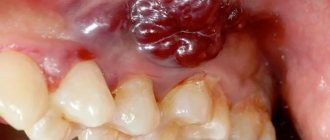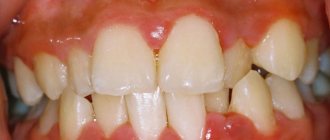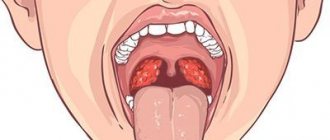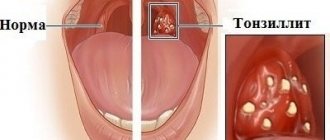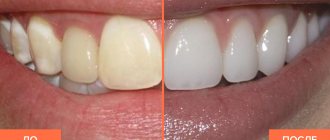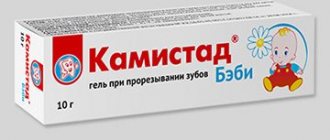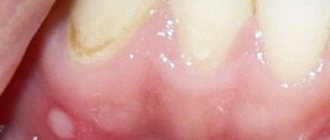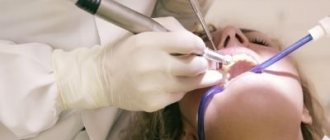Bumps in the mouth: what they are, their causes and treatment
Any neoplasms in the oral cavity require careful study of the clinical picture. This can be either a harmless growth or an alarming signal from the body. Thus, a lump on the roof of the mouth often occurs as a result of a cold or infection. This formation does not cause discomfort and resolves on its own after strengthening the immune system. If the growth is accompanied by pain and other unpleasant symptoms, this may indicate a serious pathology. Only a doctor can determine the cause of the lump and tell you what to do.
If the rash appears on the upper palate
If you notice pimples on the roof of your mouth, the disease is most likely caused by a viral infection. A similar manifestation on the oral mucosa can also be provoked by:
Often the rash caused by such diseases does not cause discomfort. But if you notice an increase in body temperature, general malaise, or difficulty breathing, you should definitely visit a doctor.
Important! It is common to distinguish between white and red rashes in the mouth. The latter, most often, appears on the throat and if it is not a consequence of any chronic disease, then the causative agent of this symptom can be lupus erythematosus, scarlet fever, food allergies, stomatitis. A white rash appears infrequently, and its causative agents can be various infections, chronic tonsillitis, herpes or candidal stomatitis.
If, in addition to the oral cavity, the rash actively appears on the skin, then the disease is progressing very actively and you should immediately contact a specialist for qualified help.
Why do bumps appear in the sky?
A growth in the mouth appears as a result of blockage of blood vessels and stagnation of organic fluids, which causes inflammation in the mucosal tissues. Among the most common causes of pathology are the following:
- bad habits – alcohol abuse and smoking;
- chronic diseases – sore throat, sinusitis;
- constant exposure to traumatic factors - incorrectly fitted crowns that become infected, eating too hot food, sucking on lollipops, etc.;
- insufficient oral hygiene - food remains behind the teeth become a favorable environment for the development of pathogenic microflora;
- inflammation of the salivary glands;
- colds and infectious diseases;
- Doctor’s mistakes – incorrect filling or tooth extraction.
A child can also develop a lump in the mouth. In most cases, the pathology occurs due to bruises, which are quite common in childhood.
Bumps also form in the mouth due to cancer (leukoplakia and papillomatosis), which pose a great danger to human health and life.
Manifestations in children
The children's body is very susceptible to attacks from various bacteria and viruses, which is why rashes on the oral mucosa in children are quite common. Infection, as a rule, occurs through the oral cavity, because children put everything in their mouths. The most common conditions associated with mouth rashes may include the following:
- viral pemphigus: in addition to the appearance of small blisters on the arms and buttocks, rashes are also noted in the mouth. This virus is acquired by airborne droplets, most often in public places. If you consult a doctor in a timely manner, treatment lasts about a week.
- stomatitis: bacteria enter the baby’s oral cavity through various contaminated objects - toys, dishes, unwashed hands or fruit. As a rule, this disease occurs most often in those children who attend kindergarten. The disease may not bother the child at all, but sometimes pain appears, which is associated with the inability to eat normally. As a result, children become irritable, act up and cry a lot, and refuse to eat. Special ointments and mouth rinses prescribed by the doctor will help reduce the symptoms of the disease,
Photo: stomatitis in children
- thrush or oral candidiasis: if the problem causes practically no trouble for an adult, then it is very unpleasant and uncomfortable for a child. As a consequence of untreated thrush, a rash appears in the baby’s mouth. Treating the oral cavity with a weak soda solution will help here. You should definitely visit a doctor.
As a rule, any rash in a child’s mouth can be treated quickly and easily. But it is still better to prevent the disease, so you should constantly monitor hygiene (but within reasonable limits). Parents should also be attentive to their bodies, because bacteria can easily be transmitted to the child.
General symptoms
A tumor formed in the oral cavity can be of different colors: white, dark red, blue, transparent yellow. Sometimes it is soft, in other cases it is dense. A lump that appears against the background of one pathology may differ depending on the individual characteristics of the patient’s body: age, general condition of his body, bad habits, etc.
The lump appears in the form of a bubble, growth, ball, compaction, tumor with faint edges. Spots (change in color of the mucous membrane) may also form in the affected area. In some cases, numbness is felt in a certain part of the oral cavity, difficulties appear when swallowing, and the voice changes. In advanced forms of the disease, the cones may be damaged, which provokes bleeding with an unpleasant taste and odor.
Painful lumps indicate inflammation and suppuration. General health worsens, body temperature may rise. Purulent intoxication of the body occurs. In this case, the lump grows, it becomes hard and hot, and the regional lymph nodes enlarge.
Reasons for appearance
A pimple on the roof of the mouth can be the result of various abnormalities. For effective therapy, an accurate diagnosis must be made.
Dental diseases
The main cause of rash in the mouth is dental pathology. These include violation of hygiene rules, traumatic injuries, improper installation of prostheses and other factors.
With inflammatory damage to the tooth root, small pimples form. It may have a white or yellowish tint. As a rule, rashes on the palate are called stomatitis or inflammatory lesions of the mucous membranes.
Infections
Infectious pathologies also quite often cause rashes in the mouth. Most often this is observed in childhood. Cough, inflammation of the throat, and viral infections often provoke minor rashes.
Such pathologies are often accompanied by general weakness and increased body temperature. Subsequently, a white coating appears in the throat. This poses an even greater health hazard.
The child has
The cause of rashes in children is usually infectious diseases and other factors.
Common causes of acne on the palate include the following:
- Measles. In this situation, the rash appears as white-green papules. The rash disappears on its own after 2-3 days and does not require specific therapy.
In this case, the underlying disease must be treated. Otherwise there is a risk of dangerous consequences.
- Chickenpox. With this disease, rashes do not always affect the mucous membranes. However, sometimes this happens.
- Thrush. In this case, a white pimple with plaque appears. Sometimes it bleeds. The pathology does not pose a great danger, but can interfere with normal food intake.
- Dysbacteriosis. The disease often occurs in young children and is accompanied by the appearance of bloody pimples in the mouth. Pathology indicates disturbances in the composition of the intestinal microflora.
In an adult
The appearance of problems in adulthood may be due to the following factors:
- Herpetic infection. In this case, a transparent pimple filled with liquid may appear on the roof of your mouth. An exacerbation of the disease occurs against the background of a weakened immune system.
The disease does not require special therapy. However, it is important to avoid damaging the rash. Otherwise, this may cause the infection to spread.
- Glossitis. The cause of red bloody acne can be poor diet, drinking large amounts of alcohol, or allergies. In this case, small painful pimples form.
If treatment is not started in time, a crust will form on their surface. In such a situation, the doctor selects therapy.
- Syphilis. White pimples on the palate, which are not accompanied by pain, may appear due to infection with syphilis. The rash is varied in nature and affects different parts of the oral cavity.
- Inflammation of the tooth root. The appearance of white and yellow pimples can cause inflammatory damage to the tooth root.
In pregnant women
The main cause of problems during pregnancy is stomatitis. Its appearance is caused by an imbalance of hormones in the body. As a result, the immune system is weakened, and the mucous membranes lose the ability to cope with infection.
If this problem occurs during pregnancy, therapy should be started immediately. It should be selected by a doctor. The infection cannot be ignored as it can cause complications.
Diagnosis of diseases accompanied by the formation of lumps in the mouth
Tumors have appeared in the mouth, and the question is, which doctor should I contact? This symptom is a prerequisite for visiting the dentist. To diagnose the disease, the doctor will first conduct a visual examination and palpation, and collect an anamnesis. A puncture is taken from the resulting lump and a bacteriological examination is carried out, which makes it possible to determine the cause of its occurrence.
Based on the results obtained, the doctor determines the need to use other diagnostic methods:
- general tests;
- X-ray;
- Ultrasound;
- biopsy.
If the cause of the formation of a lump on the upper palate is beyond the scope of the dentist’s competence, the patient is prescribed consultations with other specialists (pediatrician, therapist, gastroenterologist, endocrinologist, hepatologist). Only after making a diagnosis will the doctor determine how to treat the disease.
How to treat a pimple on the roof of your mouth
To cope with acne, you need to determine the exact causes of its appearance. Depending on this, you can select medications and folk remedies.
Pharmacy products
Treatment is selected depending on the causes of the rash. Most often, doctors prescribe antibacterial agents and drugs that help relieve inflammation. For severe pain, analgesics are prescribed.
To cope with the pathology, you need to strictly adhere to the doctor’s recommendations and not interrupt the course of therapy at the first symptoms of improvement.
To eliminate the symptoms of fungal stomatitis, antifungal agents are indicated - in particular, fluconazole. Antifungal gels can also be used.
Rinsing the mouth with antiseptic solutions helps to cope with acne on the palate. If allergies occur, you need to stop contact with allergens and take antihistamines.
Often, in addition to the main medications, general strengthening agents are prescribed. They help improve immunity and make it easier to fight pathology.
ethnoscience
Folk remedies can only be used in addition to main therapy. There are many diseases that cannot be treated with home remedies. Syphilis is one of these diseases. Therefore, this treatment can be used after consulting a doctor.
To cope with inflammation and itching, you can use a soda solution. To do this, mix 250 ml of warm water with half a small spoon of soda, mix thoroughly and use for rinsing several times a day.
Kalanchoe and aloe have a similar effect. The juice of these plants must be used to treat the affected areas of the oral cavity.
The following infusions are highly effective:
- Take 1 large spoon of oak bark, mix with 250 ml of boiling water, cool. Rinse your mouth with the strained product 4-5 times a day.
- Take 1 tablespoon each of calendula, chamomile and yarrow, add 250 ml of boiling water and leave for 20 minutes. Rinse your mouth with the strained mixture 3-4 times a day.
To prevent the proliferation of pathogenic bacteria in the oral cavity, it is worth using a solution of hydrogen peroxide with a concentration of 3%. To do this, 1 large spoon of the medicine should be mixed with a glass of water and used to rinse the mouth.
To combat bacteria, tea tree oil is perfect. To do this, it is recommended to add 3-5 drops of oil to a glass of water and keep the solution in your mouth for 1 minute. It is recommended to carry out the procedure up to 5 times a day.
At home
To alleviate your condition on your own, you need to follow these recommendations:
- maintain cleanliness of the oral cavity;
- do not injure acne;
- Avoid citrus fruits, spicy and salty foods - this will help avoid irritation of the affected areas;
- exclude sweets - this will help avoid creating an environment favorable for the development of pathogenic bacteria;
- eat more protein foods - fish, cheese, meat;
- drink a lot of clean water;
- Avoid drinking hot food and drinks.
Dental diseases
At an advanced stage of periodontitis, a fistula forms near the tooth involved in the painful process. If periostitis (inflammation of the periosteum) develops, flux may appear. At first the lump is hard, but over time it becomes softer and filled with pus.
In case of periodontitis, the tooth is unfilled and the root canals are cleaned. After removing the exudate, oral baths are prescribed using special solutions. In case of periostitis, the dentist opens the tooth, places medications in the cavity, and closes it with a temporary filling. If this treatment does not help, the tooth is removed.
Angioma
It is a benign formation, which in most cases is a congenital pathology in children. It consists of blood vessels and is dark red in color. Sometimes it looks like a small ball on a leg. Lymphangioma, formed from lymphatic vessels, most often appears on the soft palate. It looks like a small bump with a bubbly surface. First, the tumor grows inside, then a swelling appears that hurts.
The choice of treatment method depends on the type of vessels. The angioma is removed or reduced by sclerotherapy, alcohol injection, or radiation therapy. If there is a risk of severe swelling, the formation is excised with a scalpel. The ball-shaped angioma is removed using a galvanoacoustic loop.
Preventive measures
To reduce the risk of developing pathologies in the oral cavity, you should follow a number of recommendations:
- quit smoking and alcohol;
- normalize nutrition - do not eat hot, salty and spicy foods, introduce fermented milk and plant products into the diet;
- carefully and regularly observe oral hygiene;
- start treatment of any pathologies in a timely manner;
- Take vitamin complexes periodically (after consultation with your doctor).
If you experience the slightest discomfort in the palate, you should see a dentist. Paying attention to your health prevents the development of complications.
